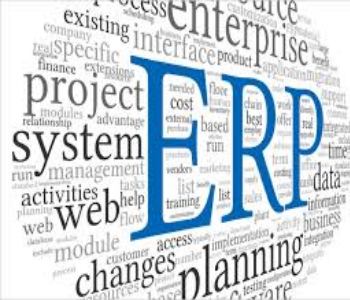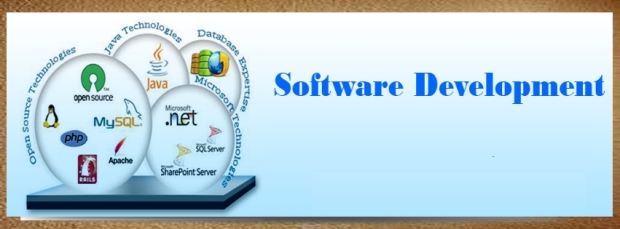Check out some of the Enterprise Resource Planning configuration and customization processes
 One way businesses are coping with the challenge of optimizing and upgrading enterprise apps is to avoid customizing. For their part, service providers are offering more options for configuring applications for particular requirements and industries. However, in some cases, configuration options are becoming numerous and layered that they present their own challenges.
One way businesses are coping with the challenge of optimizing and upgrading enterprise apps is to avoid customizing. For their part, service providers are offering more options for configuring applications for particular requirements and industries. However, in some cases, configuration options are becoming numerous and layered that they present their own challenges.
That is why some organizations hold off on upgrades, weighing the benefits of the new features against fixing broken adoptions. The key is not to customize. While it might be appealing to add few code lines, customizations have a way of multiplying and adding up to trouble, especially during upgrade cycles. When integrating an ERP system to a website, the two words that one is likely to hear are configuration and customization.
Both works in conjunction with one another, but there is a subtle difference between them. Configuration deals with the system components but not the business process requirements. Configuring enables the components to work within a given environment, including currencies, language, time zones and more. On the other hand, customization specifically operates to suit the business needs. This could include anything from adjusting screens and views to changing information that’s displayed for a given group.
Configuring an enterprise resource planning system is of the most critical parts of the process. This means changing the parameters that meet the organization’s language, financial, shipping and customer-facing needs. One could also configure the program to recognize revenue through a certain set of specifications, such as product line or geographical unit. Most configurations survive software upgrades while certain ones do not. Configuration is the normal framework set-up, such as fields, parameters and workflows. The changes are a normal part of any implementation and do not need changes to the source code.
Customization is one of the most controversial topics that surround ERP software. It requires changes to the source code and also a higher level of technical sophistication. Often, business objectives and wants could be met via set-up and configuration than customization. The ERP process could be as large a task as the company requires it to be. Although the ERP package should be configured before it is used, customization is optional. However, it greatly boosts the functionality of the program. Tailored solution may include expanding the functionality with third-party freeware, company-centric task management processes and more. Most organizations begin with the full intention of leveraging off-the-shelf package when they upgrade, replace or implement an extensive application. Nevertheless, as companies get into implementation details, request to make one or more customizations to the program are inevitable.
Every organization is unique and no single solution is going to meet 100 percent of company requirements. Nevertheless, finding the right ERP with the best functional fit would ensure that tailored requirements are minimized. Finding the right program involves defining a clear set of needs and choosing the best solution based on the needs. Often, customizing could be avoided via changing company process or using the workflow features of the package. When customization is required, the modifications must be reviewed and approved by some kind of control body, for instance a change control board.
Three critical questions that an organization needs to ask the software development company
When it comes to selecting the right software development company, unless an organization knows exactly what it is doing, or has recommendations through word of mouth, it could be hard to know where to begin. Even if there is a referral by mouth, it is still worth having several objective criteria against which to judge the software vendor, so one could decide if it is the right option.
In order to make a good choice, there are some critical questions to ask the software development company to have a successful software project. The answers to these questions could go a long way of figuring out which company is best.
Question 1: How does the company ensure that it fully understands the requirements of the software project?
Sixty-eight percent of the project fails, based on the study in the year 2008. One of the big reasons is that the developers often misunderstood the business concern that the client expects the program to solve. Worst, the vendor may give no thought as to how the client expects the package to work from the perspective of the user. A service provider should build a functional prototype that makes it easy for customers to make clear their expectations before wasting both effort and money getting them wrong.
Question 2: How does the vendor limit ‘Work in Process’?
When programmers have to divide their attention and time working on numerous client projects simultaneously, it is analogous to too much undertaking in process. Putting aside one piece of the task and selecting a new one takes up a lot of time and energy. Most of all, it is frustrating when a developer is near to a breakthrough solution.
When developers have to split their time and attention working on multiple client projects simultaneously, it’s analogous to too much WIP. Putting aside one piece of the task and picking up a new one consumes a lot of a developer’s time and energy. It’s especially frustrating when a developer is close to a breakthrough solution. The same as all creative thinkers, programmers work best when they could devote big blocks of unbroken time to a project. Working in developing teams help adjust to the inevitable ebb and handiwork flow that any service business will experience. It further provides an environment in which every individual developer could do the best job.
Question 3: How does the vendor deploy code from development to production?
The biggest source of risk is when code is moved from the development environment, meaning the computer wherein the programmer coded it, to the production environment in which the server where code would run during use. This is called deployment. One wants a service provider who practices automatic deployment against a manual method. The automatic deployment tools enable development firms to work in uniform evolution, testing and production environments, thus potentially damaging discrepancies are eradicated from the beginning. More than that, they allow for continuous delivery of code towards any environment and even a live production one without affecting uptime.
